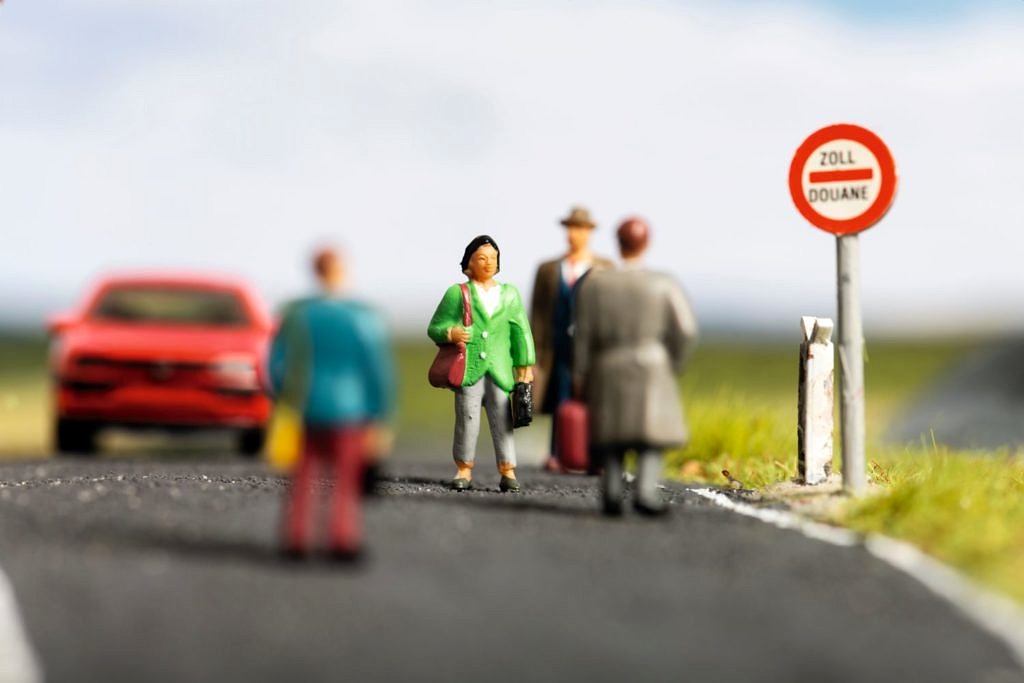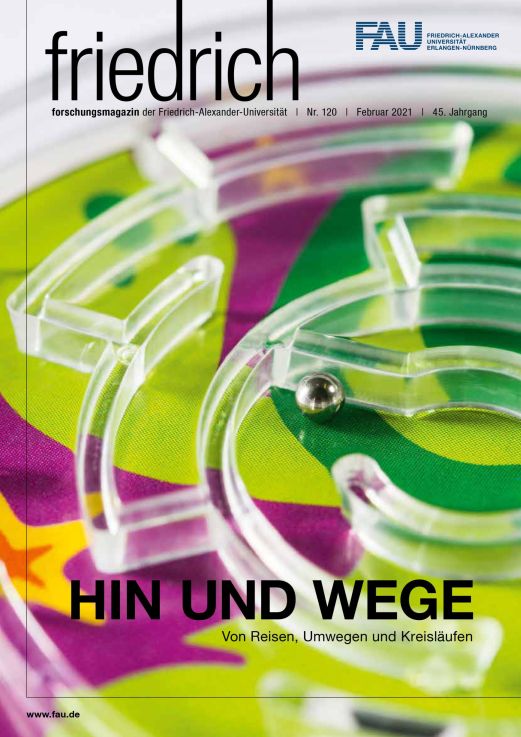Life at the border

People who live in one country and commute to another to work are proof of the success of European integration, but there are still stumbling blocks along the way.
The fact that the decision to close borders within Europe from one day to the next as a result of the coronavirus pandemic affected such a large number of people who were suddenly stranded from friends, family and their workplace on the other side of the border shows how well the continent has grown together. European unification is evidently happening. At the same time, however, surprisingly little is known about how the merging processes at the borders within the European Union actually work. What happens at the borders between Bavaria and the Czech Republic, Denmark and Sweden or in the regions around centres such as Luxembourg and Basel? ‘There is definitely a shortage of data and statistics on this topic,’ explains Professor Tobias Chilla, who researches border regions at the Institute of Geography at FAU.

The only relatively reliable data available are about people who live on one side of a border and work on the other. Ever since the abolition of border controls under the Schengen Agreement, the amount of commuter traffic at the interfaces of Europe’s borders has continued to rise for various reasons.
In several regions, money is the driving force behind the increasingly close links to neighbouring countries. For example, salaries in Luxembourg and Switzerland are often almost twice as high as in Germany. On the other hand, the cost of living in these countries is considerably higher than in neighbouring countries. It therefore seems logical to work somewhere where salaries are higher and to live somewhere where the cost of living is much lower. This means many people may work in Vienna, but commute 60 kilometres back home in the evening to Bratislava, the capital of Slovakia, where the cost of living is much lower. The same thing happens in Bavaria and Saxony on one side and the Czech Republic on the other.
Salaries are also much lower in France than in its neighbouring countries, which means that many French people in border regions work outside France. For example, staff in hotels and restaurants and in retail in Luxembourg are almost all French.
‘Instead of being the testing grounds of a European future, the seams of the European Union are more like museums testifying to the past’
A good salary is by no means the only thing that makes a job in a neighbouring country attractive, however. Several top-ranking global pharmaceutical companies that attract job seekers like a magnet are based in Basel, for example. The same applies to the strong financial sector in Luxembourg. Many people there happily accept a long commute to boost their career with a job in the highly regarded sector.

In rural areas such as those on either side of the border between Bavaria and the Czech Republic, jobs are often scarce and sometimes highly specialised. You may find your dream job beyond the border while your partner works on the other side, or you may want your children to grow up speaking your native language and to be taught it at school. The result: one more person who has chosen to commute, making their own small contribution to the European integration process in the place where it’s most important – at the border.
Commuting isn’t always easy, however. ‘Transport between neighbouring countries is often not very well coordinated,’ explains Tobias Chilla. A job in a neighbouring country suddenly becomes less attractive if it involves a long commute every day. According to Tobias Chilla, other obstacles hindering closer links are that systems for standard tickets for travel over the border often don’t exist and sometimes an excess of red tape means that not even ambulances are allowed to travel to the neighbouring country in an emergency. ‘Instead of being the testing grounds of a European future, the seams of the European Union are more like museums testifying to the past’. With this research, Tobias Chilla has not only identified the strengths, but also the weaknesses of the EU’s integration process. His findings provide some suggestions for fixing the potholes found on the path to a borderless Europe.
About the author
Roland Knauer has a doctoral degree in natural sciences, and lives and works as a journalist and author with a focus on natural sciences in Lehnin.
FAU research magazine friedrich
 This article first appeared in our research magazine friedrich. You can order the print issue (only available in German) free of charge at presse@fau.de.
This article first appeared in our research magazine friedrich. You can order the print issue (only available in German) free of charge at presse@fau.de.